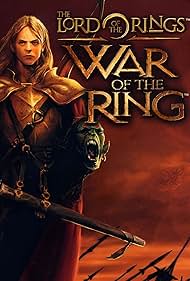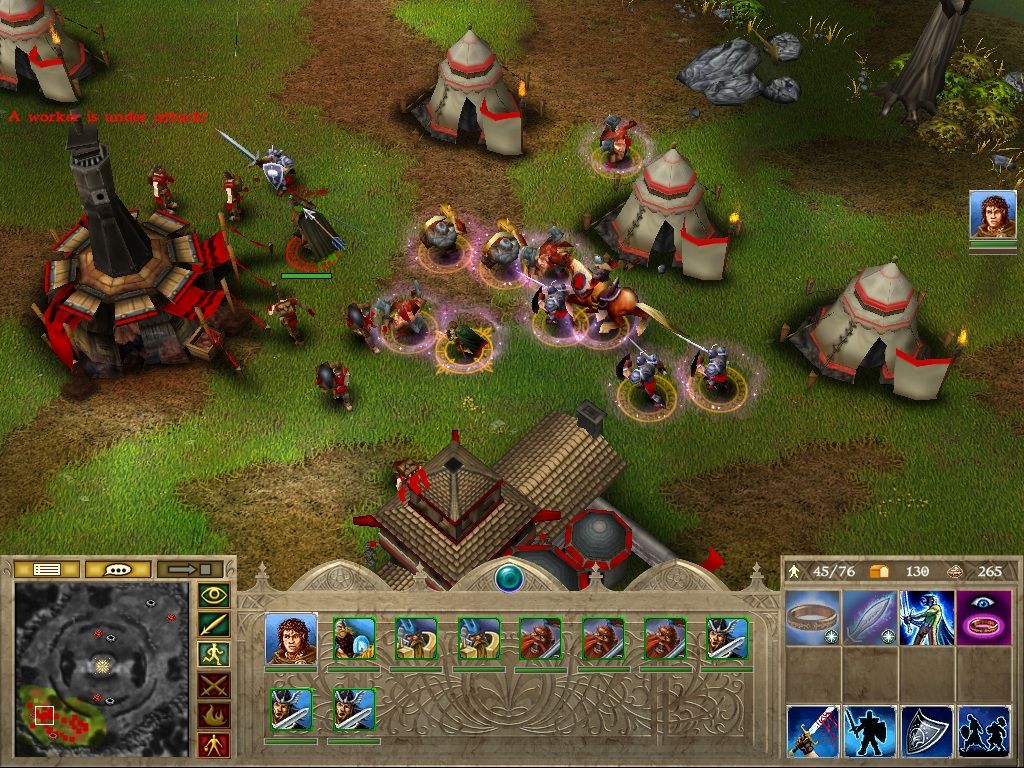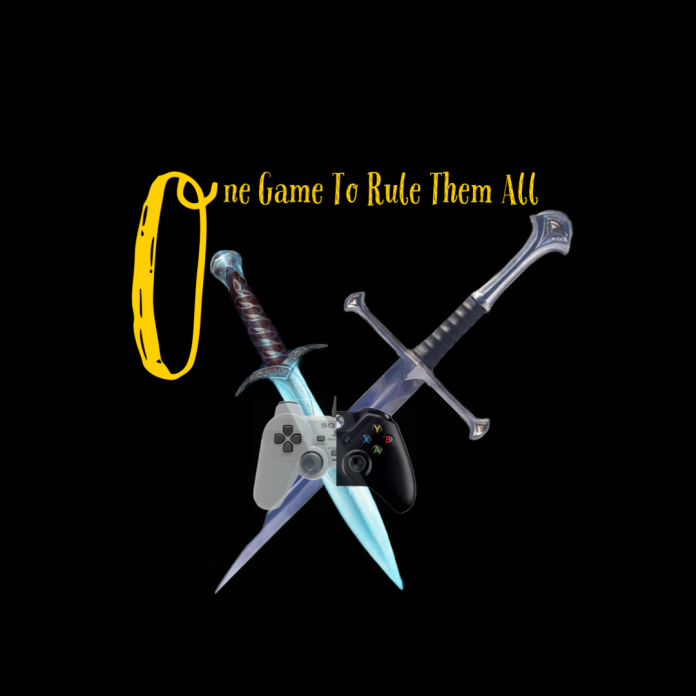
Released in 2003, “Lord of the Rings: War of the Ring” brought J.R.R. Tolkien’s iconic fantasy world to life in the realm of real-time strategy (RTS) gaming. Developed by Liquid Entertainment and published by Sierra Entertainment, this game aimed to immerse players in the epic battles and rich lore of Middle-earth. As a fan of both the Lord of the Rings franchise and RTS games, I eagerly dove into War of the Ring, hoping to experience the thrill of commanding armies and shaping the fate of Middle-earth.
Graphics and Sound
For its time, War of the Ring boasted impressive graphics that faithfully recreated the landscapes, characters, and creatures of Middle-earth. The environments, from the lush forests of Lothlórien to the desolate wastes of Mordor, were beautifully rendered and filled with detail. The character models, although not groundbreaking by today’s standards, were well-designed and recognisable, capturing the essence of Tolkien’s creations.
The sound design also deserves praise, with an epic orchestral score that perfectly complemented the game’s epic battles and dramatic moments. From the haunting melodies of the Shire to the thunderous drums of war in the battlefields, the music added depth and immersion to the overall experience.
Gameplay
At its core, War of the Ring is a traditional RTS game with a Lord of the Rings twist. Players take on the role of either the forces of good or evil, commanding armies of iconic units such as elves, dwarves, orcs, and uruk-hai. The game features a campaign mode that follows the events of the Lord of the Rings trilogy, allowing players to relive key moments from the books and movies.
One of the standout features of War of the Ring is its hero system, which allows players to recruit and control legendary characters such as Gandalf, Aragorn, and Saruman. These heroes possess unique abilities and can turn the tide of battle with their presence. Additionally, the game introduces the concept of “epic units,” massive creatures like the Balrog and Ents that can wreak havoc on the battlefield.
The gameplay itself is solid, with intuitive controls and a variety of strategic options. Players must manage resources, build bases, and recruit armies while also keeping an eye on the enemy’s movements. Battles are epic in scale, with hundreds of units clashing on screen at once, creating a sense of chaos and urgency.

Story and Lore
Obviously as a fan of Tolkien’s work, I appreciated the attention to detail given to the game’s story and lore. The campaign faithfully follows the events of the Lord of the Rings trilogy, with players participating in iconic battles such as Helm’s Deep and Minas Tirith. The dialogue and voice acting, while not always perfect, effectively capture the spirit of Tolkien’s characters and world.
Replayability
While the campaign offers a satisfying single-player experience, War of the Ring truly shines in its multiplayer mode. With support for up to eight players in online matches, the game provides endless opportunities for strategic battles against friends or strangers. The ability to create custom scenarios and maps further enhances the game’s replayability, ensuring that each match feels fresh and exciting.
Conclusion
Overall, Lord of the Rings: War of the Ring is a worthy addition to the Lord of the Rings gaming canon. With its stunning visuals, epic battles, and faithful adaptation of Tolkien’s world, the game successfully captures the magic of Middle-earth. While it may not have revolutionised the RTS genre, War of the Ring remains a beloved title for fans of both Lord of the Rings and strategy gaming. If you’re looking to embark on an epic journey through Middle-earth, this game is definitely worth checking out.
Check back next Thursday for the next game in the series. Cheers.





